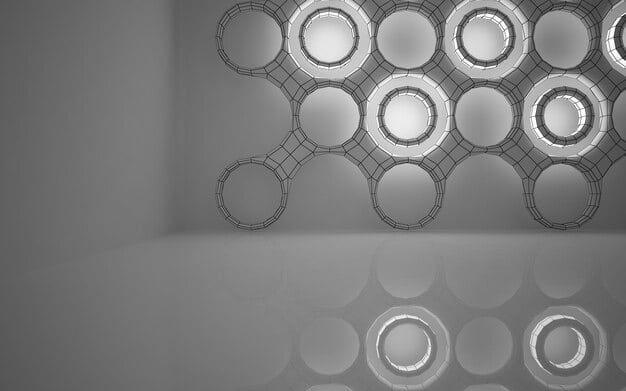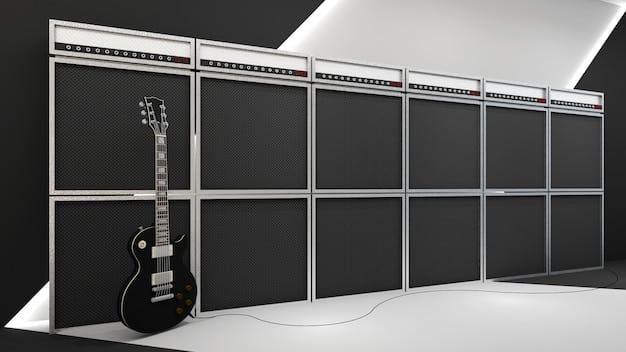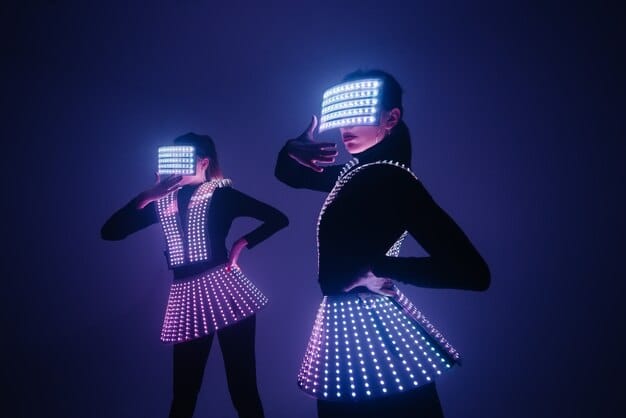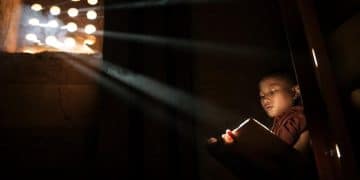The Evolution of Stage Design: Recent Theater Reviews Analysis

Recent theater reviews offer a lens through which to examine the evolution of stage design, showcasing its dynamic and transformative role in enhancing theatrical storytelling and audience engagement.
The world of theater is constantly evolving, and one of the most dynamic aspects of this evolution is the evolution of stage design: a visual analysis through the lens of recent theater reviews. By examining recent theatrical productions, we can gain insight into how stage design has transformed and continues to shape the audience experience.
Understanding the Foundations of Stage Design
Stage design, at its core, is about creating a visual environment that supports the narrative and enhances the emotional impact of a play. It encompasses a wide range of elements, from set construction to lighting, costumes, and props, all working together to create a cohesive and immersive experience for the audience.
Historically, stage design has undergone significant transformations, reflecting shifts in artistic sensibilities, technological advancements, and societal values.
Early Stage Design
In the early days of theater, stage design was often simple and rudimentary. Greek theaters, for example, relied on natural landscapes and minimal set pieces. Similarly, Elizabethan theaters featured bare stages with limited scenery.
- Greek theaters used the ‘orchestra’ as the main performance space.
- Elizabethan theaters often utilized a thrust stage that extended into the audience.
- Early designs focused more on acoustics and audience sightlines rather than elaborate sets.
Over time, stage design became more elaborate, incorporating painted backdrops, intricate costumes, and innovative lighting techniques.

Key Elements of Modern Stage Design
Modern stage design is a multifaceted discipline that integrates various artistic and technical elements. By understanding the key components, it’s possible to fully appreciate the degree to which stage design has to offer to any performance.
When we talk about modern stage design, there are a few key elements that define it.
Set Design
The set is the foundation of any stage design, providing the physical environment in which the action unfolds. It can range from realistic depictions of real-world locations to abstract and symbolic representations of themes and ideas.
Modern set design often incorporates elements of minimalism, sustainability, and interactivity, creating dynamic and engaging spaces for performers and audiences alike.
Lighting Design
Lighting is a crucial element of stage design, capable of evoking mood, creating focus, and enhancing the visual impact of the set and costumes. Advanced lighting technologies, such as LEDs and automated fixtures, have revolutionized what is capable with theatrical illumination.
Modern lighting design often employs complex color palettes, dynamic movement, and sophisticated control systems to create immersive and visually stunning effects.

Analyzing Recent Theater Reviews: Trends in Stage Design
Recent theater reviews offer valuable insights into current trends and innovations in stage design. By examining critical responses to various productions, we can identify common themes, techniques, and approaches that are shaping the landscape of contemporary theater.
Over the past few years, several notable trends have emerged in stage design.
Technological Integration
One of the most significant trends in recent stage design is the increasing integration of technology. Projection mapping, LED screens, and interactive media are being used to create dynamic and immersive environments that blur the lines between reality and illusion.
Reviews often highlight the seamless integration of these technologies, praising their ability to enhance storytelling and engage audiences in new and exciting ways.
Minimalism and Abstraction
In contrast to the elaborate sets of the past, many contemporary productions are embracing minimalism and abstraction in their stage design. By stripping away unnecessary details and focusing on essential forms and concepts, designers are creating visually striking and thought-provoking environments.
Reviews often commend this approach for its ability to draw attention to the performers and the narrative, allowing audiences to engage on a deeper emotional level.
Case Studies: Notable Examples from Recent Productions
To further illustrate the evolution of stage design, let’s examine a few notable examples from recent theatrical productions.
These case studies demonstrate the diversity and innovation in modern stage design.
“Hamilton”: A Revolution in Set and Costume
“Hamilton” is celebrated for its innovative blend of historical and contemporary elements in its stage design. The set features a multi-tiered structure that evokes the sense of early America while also incorporating modern lighting and projections.
- The revolving stage facilitates seamless transitions between scenes.
- Costumes blend historical accuracy with contemporary style.
- Lighting design emphasizes emotion and atmosphere.
Reviews have praised the production’s ability to create a visually stunning and emotionally resonant experience for audiences.
“The Curious Incident of the Dog in the Night-Time”: Immersive Technology
This production utilizes advanced projection mapping and sound design to create an immersive and disorienting environment that reflects the protagonist’s perspective.
- The set features a blank canvas that transforms with projections.
- Sound design creates a sense of sensory overload.
- Lighting design enhances the emotional impact of key moments.
Critics have praised the production for its innovative use of technology to create a truly unique and unforgettable theatrical experience.
The Impact of Stage Design on Audience Experience
Effective stage design has a profound impact on the audience experience. By creating a visually compelling and emotionally resonant environment, designers can enhance the storytelling, deepen the audience’s engagement, and leave a lasting impression.
The role of stage design in creating a lasting impact on the audience cannot be understated.
Emotional Connection
Stage design can evoke a wide range of emotions, from joy and excitement to sadness and fear. By carefully selecting colors, textures, and spatial arrangements, designers can create an atmosphere that resonates with the audience and enhances their emotional connection to the story.
Reviews often highlight the emotional impact of stage design, noting how it can heighten the drama, amplify the comedy, and deepen the audience’s understanding of the characters and themes.
Enhanced Storytelling
Stage design can be used to reinforce the narrative, providing visual cues that clarify the plot, reveal character motivations, and foreshadow future events. By creating symbolic representations of themes and ideas, designers can add layers of meaning to the production and enrich the audience’s interpretation.
Critics often praise stage design for its ability to enhance storytelling, noting how it can clarify complex ideas, create visual metaphors, and add depth and nuance to the production.
The Future of Stage Design
The future of stage design is likely to be shaped by continued technological advancements, evolving artistic sensibilities, and increasing environmental awareness. We can anticipate even greater integration of technology, a renewed focus on sustainability, and a growing emphasis on inclusivity and accessibility.
Several emerging trends offer clues about what is to come.
Virtual and Augmented Reality
Virtual and augmented reality technologies have the potential to revolutionize stage design, allowing designers to create immersive and interactive environments that extend beyond the physical stage. Audiences may soon be able to experience theater in entirely new ways, blurring the lines between reality and virtuality.
These tools will offer designers entirely new palettes to work with.
Sustainable Practices
As environmental awareness grows, there is an increasing demand for sustainable practices in all areas of theater production, including stage design. Designers are exploring innovative ways to reduce waste, reuse materials, and minimize their environmental impact.
This focus will have a far-reaching impact on production and design strategies.
| Key Point | Brief Description |
|---|---|
| 🎭 Foundations | Early design focused on acoustics & sightlines. |
| 💡 Modern Elements | Set design, lighting, and sound have transformative power. |
| 🔄 Trends | Tech, minimalism, & abstraction shape modern stages. |
| 🌱 The Future | Virtual reality & sustainable practices will drive change. |
Frequently Asked Questions
▼
The primary purpose of stage design is to create a visual environment that supports the narrative, enhances the emotional impact, and immerses the audience in the world of the play.
▼
Technology has revolutionized stage design by enabling designers to create dynamic, immersive environments using projection mapping, LED screens, and interactive media, blurring the lines between reality and illusion.
▼
Minimalism in stage design involves stripping away unnecessary details and focusing on essential forms and concepts to create visually striking and thought-provoking environments that draw attention to the performers and narrative.
▼
Effective stage design profoundly impacts the audience by creating emotional connections, reinforcing the narrative, clarifying the plot, and adding layers of meaning to the production, enhancing overall engagement.
▼
Future trends in stage design include the integration of virtual and augmented reality technologies, a growing emphasis on sustainable practices, and a focus on inclusivity and accessibility in theatrical productions.
Conclusion
The evolution of stage design, as seen through recent theater reviews, showcases a dynamic field continually transformed by technological advancements, shifts in artistic sensibilities, and a growing awareness of environmental concerns. From minimalist sets to immersive technological integrations, stage design plays a crucial role in shaping the audience experience and enhancing the art of storytelling.





